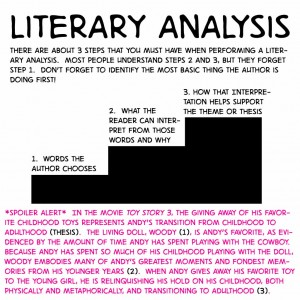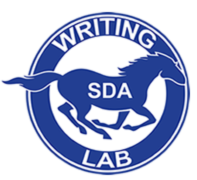It seems that one of the things that students struggle with most when performing a literary analysis is taking the analysis one step at a time. Often, a student will make a broad claim, such as, “The red hunting hat proves that Holden is still a child,” or “Fitzgerald shows that being greedy will only get you killed.”
Most of the time, there are some good insights behind these claims, but these types of assertions are pretty general and skip the steps necessary to prove the point to the reader–it’s like driving from the start to the finish line without ever actually running the race. Or think of it this way: a police investigator can’t prove someone is guilty of a crime just because they found something at the crime scene that might be evidence. They have to look at the evidence first, figure out what the evidence means and how it fits into the case, and then take the meaning of that evidence and the meanings of all the other evidence and combine them in order to complete their investigation and come to a conclusion.
When performing an analysis, try to figure out where each part of your claim belongs. Is it basic level 1 type evidence? Or is it a level 2, higher-level-thinking idea, such as what the evidence means to the reader? Or is it an even bigger, level 3 idea, like how the evidence and the meaning behind the evidence relates to the thesis?

A quick note: The author doesn’t really do anything but choose words. He or she doesn’t “make you feel” a certain way–at least not directly. Instead, the author just puts words on the page, and it is how you as a reader interpret those words that gives the words their meaning. If an author writes a story about sharks, but he or she doesn’t choose effective words to describe the shark to make it scary, then you as a reader probably aren’t going to be scared. And if you just plain aren’t scared of sharks and never ever will be, then it doesn’t matter what the author does; the story is just words and it can’t be scary or sad or funny or anything if there isn’t a reader to interpret those words in a way that means something to him or her.
(One fun example : In many cultures, especially English speaking ones such as in the United States, the people read from left to right. Because of this, things moving from left to right seem normal to us. Many film makers know this and will set up actions in scenes to move from left to right when they want the action to seem normal, and they will have the actions move from right to left when they want the action to seem abnormal. However, in countries that read from right to left or up and down, there is either an opposite effect or none at all. In such instances, the meanings behind certain images depend greatly on how the viewer interprets them rather than the intentions of the film maker who created the images.)
